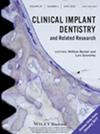Maxillary Sinus Grafting Complications: Diagnosis, Management, Patient Outcomes, and Role of Multidisciplinary Care
Abstract
Background
Maxillary sinus grafting (MSG) is often crucial for successful dental implant placement in the atrophic maxilla. However, it carries the risk of sinonasal complications, with outcomes frequently influenced by the patient's sinonasal health and the subjective assessment of surgeons. Thorough preoperative evaluation by otolaryngologists is vital to reduce these risks.
Purpose
This study emphasizes the importance of interdisciplinary collaboration in managing sinonasal complications following MSG. By highlighting the role of otolaryngologists in preoperative evaluations and proposing a systematic approach, it aims to improve surgical planning and optimize patient outcomes.
Discussion
Sinonasal complications after MSG can be classified into early and delayed categories, each requiring distinct management approaches. Early complications, such as infections and graft migration, demand immediate attention, while delayed issues, like implant osseointegration failure, pose longer term challenges. Accurate diagnosis is often difficult due to the overlap of symptoms with other sinus conditions, necessitating comprehensive clinical evaluations, endoscopic findings, and radiographic imaging. Collaboration between dental and otolaryngology specialists is essential, underscoring the need for a multidisciplinary strategy in managing these complications.
Conclusion
Managing sinonasal complications post-MSG requires prompt diagnosis and a combination of medical and surgical interventions. Early detection and treatment, supported by a structured interdisciplinary approach, are key to improving patient outcomes. Integrating dental and otolaryngological expertise is critical to ensuring the success of MSG procedures and enhancing overall patient care.

 求助内容:
求助内容: 应助结果提醒方式:
应助结果提醒方式:


